If you have never felt wool straight off a sheep, it is a bit greasy because of the lanolin in it, which is a water-proofing wax that is secreted from the sebaceous glands of a sheep. It makes your hands really soft. It also smells like sheep, a smell that I really like now, weird yah?
I got time to do a little shopping at the market too. I made sure to get scones early from Alice at The Baker and the Cakemaker stall. She makes the most amazing scones (I had a ham and cheese AND an apricot!) And the rye bread her husband bakes is perfection. I ended up with too many strawberries to eat, so after finishing the afternoon sheep/dog chores with Dan, I went home and made some strawberry jam.
This took me about 45 minutes and made 3 good size jars of jam from 3 baskets of berries, a box of pectin, a cup of apple juice and 2 cups of sugar. The best part for me is when the lid pings as it seals and you know you did it right. Then I know it can last for months in the pantry and still taste great! (Not that it will last that long.)
Sunday was just as full and rewarding. One of Dan's previous interns, Courtney, graciously allowed me to come make yogurt and cheese at her house with her and her adorable baby, Josie. Courtney has 5 Friesian dairy ewes, one of which is producing milk. So first things first, we got Cleo the ewe on the milking stand and did the morning milking. Hand milking is a very interesting, oddly intimate experience. It is wild to me to think that thousands of years ago some person was watching a mother animal feed her baby and decided it would be a good (and extraordinarily dangerous) idea to try and get some of that milk for himself!
So, we started by making yogurt out of the warm, fresh milk. We did this by heating then cooling the milk to specific temperatures and adding a little bit of whole cows milk yogurt with live cultures as a starter. Then we had to keep it warm, dark and still for at least 6 hours, preferably overnight. (By the time I left about 6 hours later, it had not yet set.)
Then it was on to the cheese, feta cheese! This was my first experience with cheese making and I found that it is a long and fairly complicated process. You need several specialty things to accomplish it as well, such as lipase (optional, for flavor), meso or thermophilic starter, rennet (which solidifies the milk into cheese), thermometers, cheesecloth, string, big pots to double boil and lots of water. And of course, milk. We used previously frozen sheep's milk, which freezes and thaws out perfectly, unlike cows milk. Here are a couple pictures of our process:
So after we separated the curds (the solid part) from the whey (the liquid part), we heated the whey to just before it boiled and then scooped out the ricotta cheese that formed on the top, amazing! And the best part...we could eat it right away!
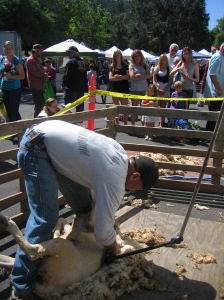
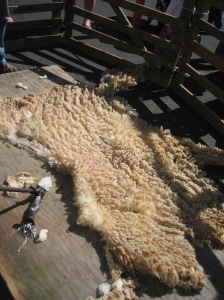
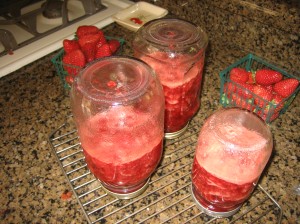
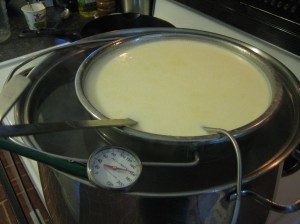
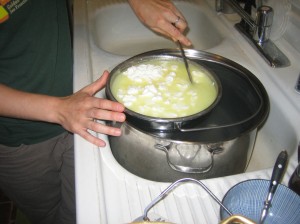
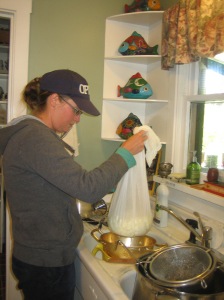
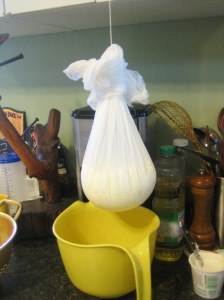
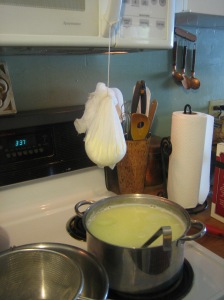
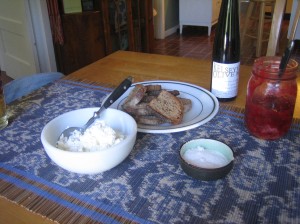
No comments:
Post a Comment